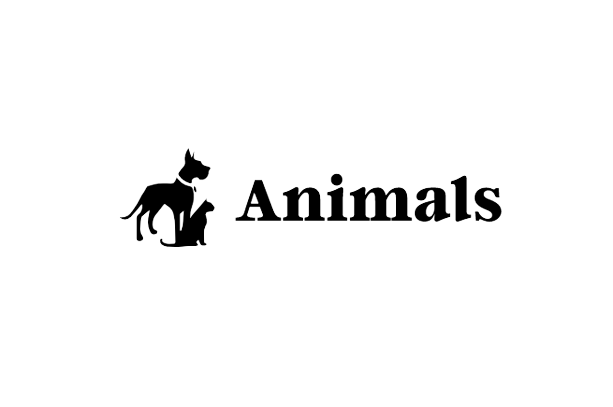Explore the fascinating world of the Hawksbill Sea Turtle, a majestic marine creature known for its intricate shell and critical role in maintaining coral reef ecosystems. Discover its characteristics, habitat, conservation status, and how you can help protect this remarkable species.

Introduction: Unveiling the Enigmatic Hawksbill Sea Turtle
When it comes to captivating marine creatures, few can rival the mesmerizing beauty and ecological significance of the Hawksbill Sea Turtle. Nestled in the family Cheloniidae, this majestic reptile is widely recognized for its striking features, most notably its distinctively shaped beak-like mouth, and intricately patterned carapace. The Hawksbill Sea Turtle, scientifically known as Eretmochelys imbricata, commands attention not only for its aesthetic allure but also for its critical role in maintaining the delicate balance of our planet's marine ecosystems. In this comprehensive article, we delve into the captivating world of the Hawksbill Sea Turtle, unraveling its habitat, unique characteristics, conservation status, and the crucial steps we can take to preserve this remarkable species.
Hawksbill Sea Turtle: A Majestic Marvel of the Sea
The Hawksbill Sea Turtle boasts an array of captivating attributes that make it a true marvel of the ocean. Let's delve into some of its distinguishing features:
1. Exquisite Shell Patterns: A Tapestry of Nature's Artistry
The Hawksbill Sea Turtle's shell, or carapace, is a masterpiece of natural artistry. Its scaly appearance showcases intricate overlapping patterns that create a stunning display of coloration. With hues ranging from amber and brown to black, the carapace of the Hawksbill Sea Turtle is a sight to behold.
2. Beak-Like Mouth: A Unique Adaptation
One of the most remarkable features of the Hawksbill Sea Turtle is its beak-like mouth, which sets it apart from other sea turtle species. This specialized mouth structure allows it to forage for its preferred food source, primarily consisting of sponges and other invertebrates found on coral reefs. Its jaw is equipped with a set of sharp, curving mandibles that enable it to reach into crevices and extract prey with exceptional precision.
3. Size Matters: An Impressive Stature
While not the largest of sea turtles, the Hawksbill Sea Turtle still commands attention with its substantial size. On average, adults measure between 2 to 3.5 feet (60 to 100 centimeters) in length, with a weight ranging from 100 to 150 pounds (45 to 68 kilograms). However, some individuals have been known to exceed these measurements, reaching up to 4 feet (120 centimeters) in length.
4. A Lifespan Beyond Centuries: The Testimony of Time
The Hawksbill Sea Turtle, much like its marine counterparts, boasts a remarkable lifespan. These magnificent creatures can live for several decades, with estimates ranging between 30 to 50 years in the wild. However, some records suggest that they may live beyond a century, making their existence an enduring testament to the resilience of the natural world.
Habitat: Navigating the Vast Oceanic Realm

The Hawksbill Sea Turtle roams the tropical and subtropical waters of the world's oceans, making its presence known in various habitats. Let's explore some of its preferred locations:
1. Coral Reef Ecosystems: A Haven for the Hawksbill
Coral reefs serve as vital habitats for the Hawksbill Sea Turtle, providing them with both sustenance and refuge. These vibrant ecosystems, teeming with an abundance of marine life, offer the perfect conditions for the Hawksbill Sea Turtle to forage on sponges, algae, and other prey, while also providing them with shelter from predators and strong currents.
2. Seagrass Beds: Nourishing Resting Spots
In addition to coral reefs, seagrass beds hold great importance for the Hawksbill Sea Turtle. These underwater meadows provide crucial resting spots for the turtles, as well as a rich source of food. Seagrass leaves are a favorite delicacy for the Hawksbill, and their grazing activities help maintain the health of these vital coastal habitats.
3. Rocky Coastlines: Nesting Grounds
When it comes to reproduction, Hawksbill Sea Turtles display remarkable fidelity to their birthplace. They return to the same beaches where they hatched to lay their own eggs. Often, these beaches feature rocky coastlines with secluded coves and sandy areas where the turtles dig their nests. The choice of nesting grounds is influenced by factors such as sand temperature and accessibility to the water.
4. Wide Distribution: Global Wanderers
Hawksbill Sea Turtles possess a wide distribution, with populations found across various regions of the world. From the tropical waters of the Pacific and Indian Oceans to the Caribbean Sea and the Mediterranean, these marine wanderers traverse vast distances, adapting to different environments along their migratory routes.
Conservation Status: Battling for Survival
Despite their captivating presence and ecological significance, Hawksbill Sea Turtles face numerous threats that jeopardize their survival. Human activities and environmental challenges pose significant risks to these majestic creatures. Let's shed light on the conservation status of Hawksbill Sea Turtles and the pressing issues they encounter:
1. Endangered Species: A Vulnerable Status
The Hawksbill Sea Turtle is listed as an endangered species on the International Union for Conservation of Nature (IUCN) Red List. This classification reflects the significant decline in their global population over the years due to factors such as habitat destruction, pollution, climate change, and poaching.
2. Habitat Loss: An Ever-Present Menace
The degradation and destruction of coral reefs and seagrass beds deal a severe blow to the Hawksbill Sea Turtle population. Pollution, coastal development, and destructive fishing practices all contribute to the loss of these critical habitats. As habitats diminish, so do the opportunities for feeding, nesting, and overall survival of the species.
3. Illegal Trade: A Shadowy Threat
The Hawksbill Sea Turtle faces the grim reality of being a victim of illegal wildlife trade. Their exquisite shells, often referred to as "tortoiseshell," have been highly coveted for centuries. Despite international trade bans, the demand for these shells continues, driving an illicit market that exploits and decimates the population of Hawksbill Sea Turtles.
4. Climate Change: Unpredictable Waters
The increasing impacts of climate change pose a significant threat to Hawksbill Sea Turtles. Rising sea levels, ocean acidification, and changing temperature patterns affect both their nesting beaches and foraging grounds. As habitats shift and the availability of food sources fluctuates, the resilience of these remarkable creatures is put to the test.
5. Light Pollution: Disrupting Natural Cycles
Light pollution along coastal areas poses a lesser-known but still a consequential threat to Hawksbill Sea Turtles. Artificial lights from beachfront developments can disorient hatchlings, leading them away from the sea and towards dangerous inland areas. Additionally, bright lights can deter adult turtles from nesting, further impacting their reproductive success.
6. Bycatch: Accidental Trappings
The fishing industry unintentionally captures Hawksbill Sea Turtles in fishing nets and lines, leading to significant mortality rates. As these turtles often inhabit the same areas where fishing activities take place, they become entangled and unable to escape. Bycatch remains a pressing concern for the conservation of Hawksbill Sea Turtles and calls for sustainable fishing practices.
FAQs about Hawksbill Sea Turtles
- The scientific name of the Hawksbill Sea Turtle is Eretmochelys imbricata.
2. How long can Hawksbill Sea Turtles live?
- Hawksbill Sea Turtles have an impressive lifespan, with estimates ranging from 30 to 50 years in the wild. However, some individuals have been known to live beyond a century.
3. Why are Hawksbill Sea Turtles called "hawksbill"?
- Hawksbill Sea Turtles derive their name from their unique beak-like mouth, which resembles the beak of a hawk. This specialized mouth structure enables them to forage for food in crevices and extract prey with precision.
4. What do Hawksbill Sea Turtles eat?
- Hawksbill Sea Turtles primarily feed on sponges and other invertebrates found on coral reefs. Their specialized jaw structure allows them to access and extract prey from tight spaces.
5. Why are Hawksbill Sea Turtles important for coral reefs?
- Hawksbill Sea Turtles play a vital role in maintaining the health and balance of coral reef ecosystems. By feeding on sponges, they prevent the sponges from overgrowing and dominating the reefs, allowing other species to thrive.
6. How can I help protect Hawksbill Sea Turtles?
- There are several ways you can contribute to the conservation of Hawksbill Sea Turtles:
- Support and participate in local and global marine conservation initiatives.
- Reduce the use of single-use plastics and dispose of them responsibly.
- Choose sustainable seafood options to minimize the impact on marine ecosystems.
- Educate others about the importance of protecting marine life, including Hawksbill Sea Turtles.
- Respect nesting areas and avoid disturbing nesting turtles or their nests.
Conclusion: Safeguarding the Future of the Hawksbill Sea Turtle
The Hawksbill Sea Turtle, with its enchanting beauty and ecological significance, reminds us of the intricate interconnections that sustain our planet's biodiversity. As we witness the challenges faced by these majestic creatures, it becomes our collective responsibility to take action and protect their future. By preserving their habitats, combating illegal wildlife trade, and addressing the impacts of climate change, we can ensure the survival of the Hawksbill Sea Turtle for generations to come. Let us join hands in safeguarding this incredible species and preserving the fragile balance of our oceans.



0 Comments